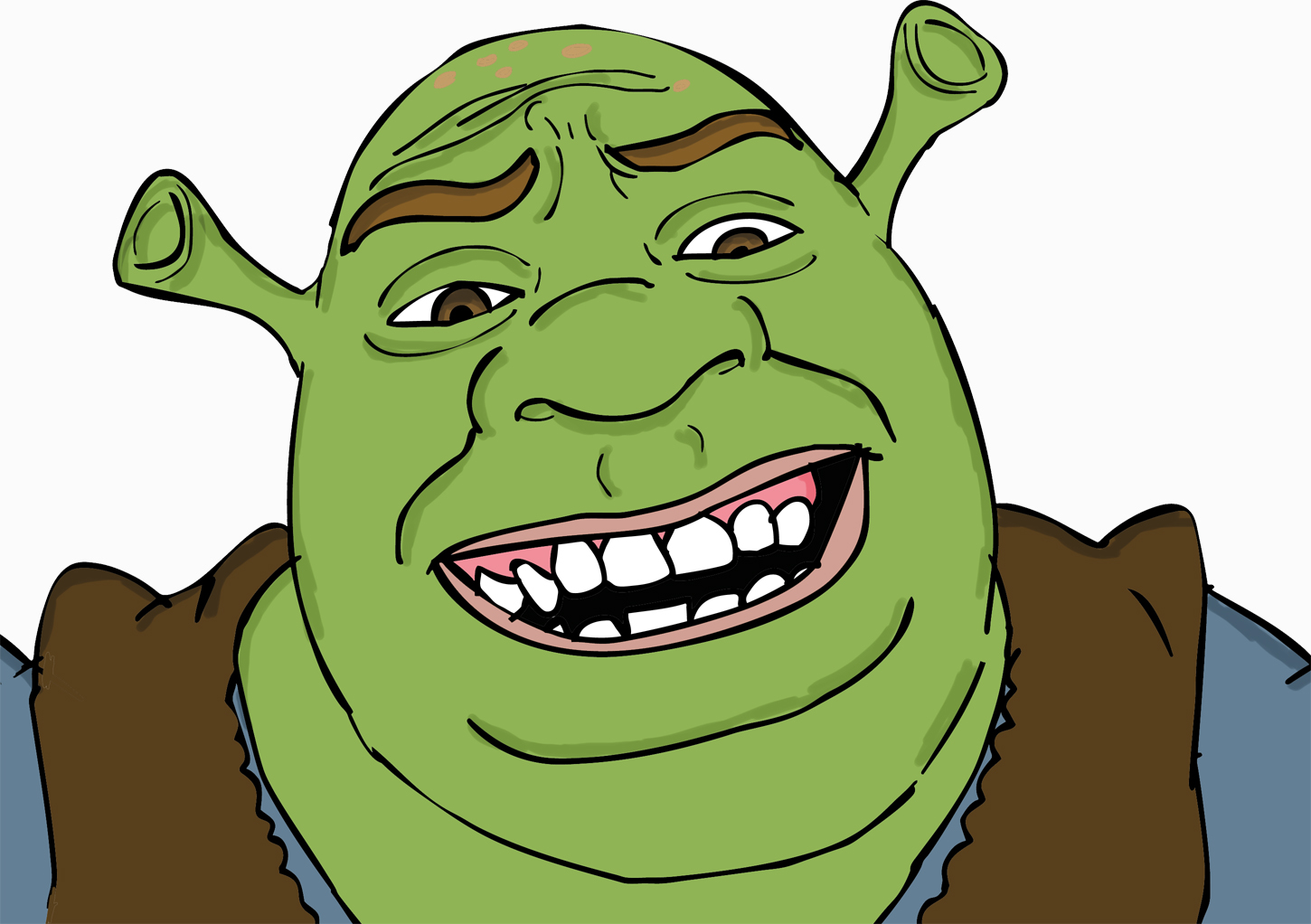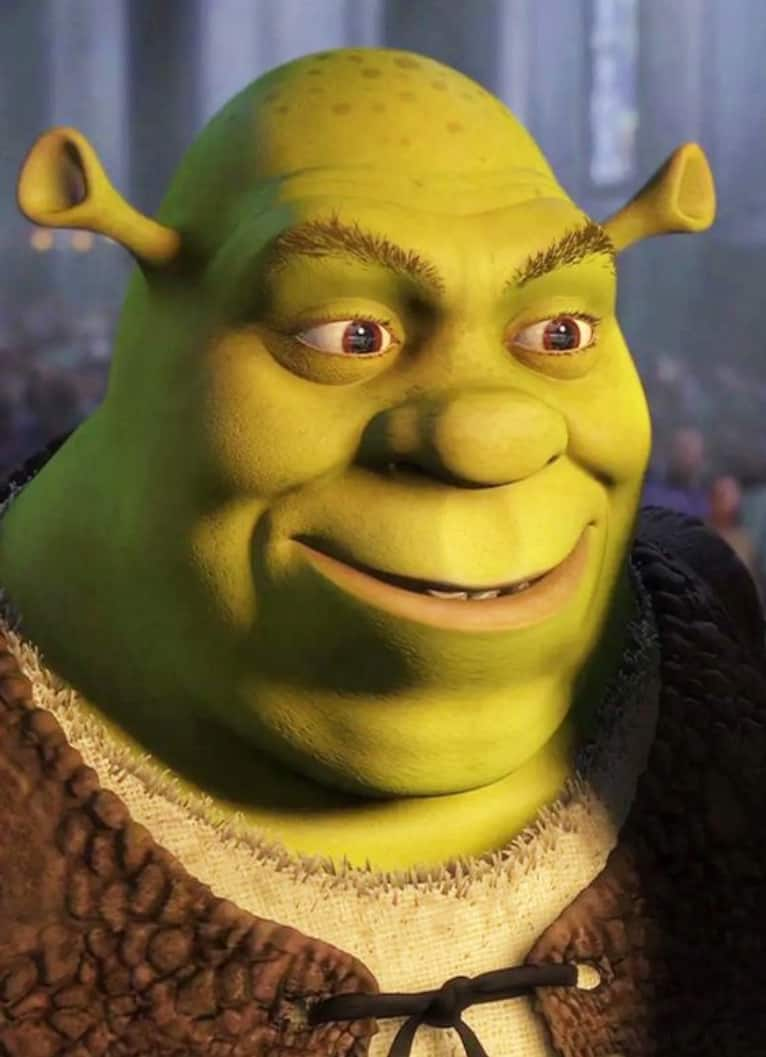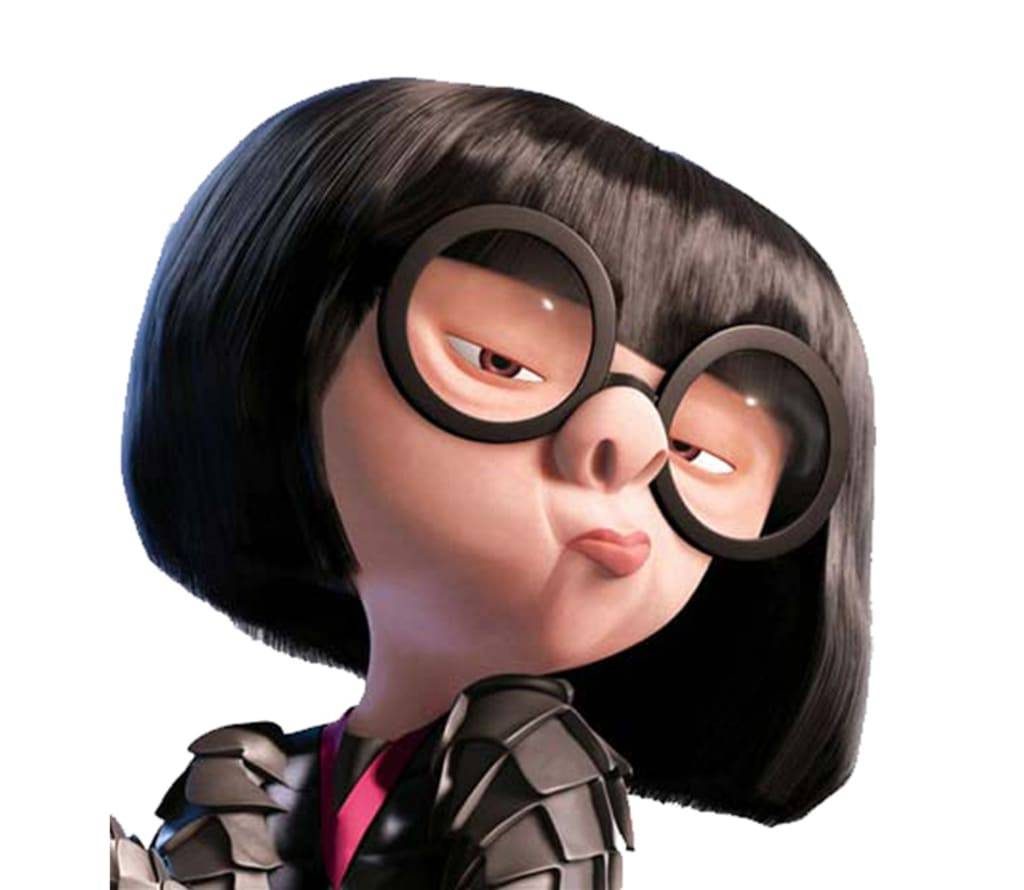The Hilarious World Of Visually Challenged Cartoon Characters
Ugly cartoon characters: The unsung heroes of animation
Ugly cartoon characters are often overlooked in favor of their more attractive counterparts. However, these characters can be just as entertaining and lovable as their prettier peers. In fact, some of the most iconic cartoon characters of all time are considered ugly by traditional standards.
So what makes an ugly cartoon character so appealing? For one thing, they're often more relatable than their more attractive counterparts. We can all identify with the feeling of being different or not fitting in. Ugly cartoon characters remind us that it's okay to be different, and that we should embrace our own unique qualities.
- Why Vegamovies Telugu Movie Is The Ultimate Destination For Film Enthusiasts
- Topher Graces Tv Shows Mustsee Roles Highlights
Ugly cartoon characters can also be very funny. Their exaggerated features and clumsy antics can make us laugh out loud. They can also teach us valuable lessons about life and friendship.
So next time you see an ugly cartoon character, don't be too quick to judge. Take a closer look and you might just find yourself falling in love with their unique charm.
Ugly cartoon characters
There are many different types of ugly cartoon characters, but they all share a few key aspects. These aspects include:
- Unattractive physical features: Ugly cartoon characters often have exaggerated physical features that make them unattractive by traditional standards. These features can include large noses, buck teeth, and crooked eyes.
- Clumsy and awkward: Ugly cartoon characters are often clumsy and awkward. They may trip over their own feet, bump into things, and make silly mistakes.
- Kind and lovable: Despite their unattractive physical features and clumsy behavior, ugly cartoon characters are often kind and lovable. They have a good heart and always try to do the right thing.
Ugly cartoon characters
Ugly cartoon characters play an important role in animation. They provide comic relief, teach valuable lessons, and help us to embrace our own unique qualities. Some of the most iconic cartoon characters of all time are considered ugly by traditional standards, but they are still beloved by audiences of all ages.
Here are some of the benefits of ugly cartoon characters:
- They can make us laugh.
- They can teach us valuable lessons about life and friendship.
- They can help us to embrace our own unique qualities.
- They can make us feel less alone.
Ugly cartoon characters
Ugly cartoon characters have been featured in popular culture for decades. Some of the most famous ugly cartoon characters include:
- Homer Simpson
- Beavis and Butthead
- Mr. Bean
- Shrek
- The Goofy Goobers
These characters have all become iconic in their own way, and they continue to entertain audiences of all ages.
Ugly cartoon characters
Ugly cartoon characters are an important part of animation. They provide comic relief, teach valuable lessons, and help us to embrace our own unique qualities. So next time you see an ugly cartoon character, don't be too quick to judge. Take a closer look and you might just find yourself falling in love with their unique charm.
Ugly cartoon characters
Ugly cartoon characters are often overlooked in favor of their more attractive counterparts. However, these characters can be just as entertaining and lovable as their prettier peers. In fact, some of the most iconic cartoon characters of all time are considered ugly by traditional standards.
- Unattractive physical features: These characters often have exaggerated physical features that make them unattractive by traditional standards, such as large noses, buck teeth, and crooked eyes.
- Clumsy and awkward: They are often clumsy and awkward, tripping over their own feet, bumping into things, and making silly mistakes.
- Kind and lovable: Despite their unattractive physical features and clumsy behavior, these characters are often kind and lovable, with a good heart and always trying to do the right thing.
- Comic relief: They provide comic relief in animations, making audiences laugh with their exaggerated features and silly antics.
- Teaching valuable lessons: They can teach valuable lessons about life and friendship, showing that it's okay to be different and that we should embrace our own unique qualities.
- Cultural impact: Ugly cartoon characters have become iconic in popular culture, with some of the most famous examples including Homer Simpson, Shrek, and Mr. Bean.
These six key aspects highlight the diverse dimensions of ugly cartoon characters. They can be physically unattractive, clumsy, and awkward, yet they often possess endearing qualities that make them lovable. They provide comic relief and teach valuable lessons, and have had a significant impact on popular culture. By embracing their unique characteristics, ugly cartoon characters remind us that it's okay to be different and that we should all embrace our own unique qualities.
Unattractive physical features
Unattractive physical features are a common characteristic of ugly cartoon characters. These features are often exaggerated to create a comical effect, and they can include large noses, buck teeth, crooked eyes, and other exaggerated features. While these features may not be considered attractive by traditional standards, they are often what makes these characters so endearing and memorable.
For example, Homer Simpson is one of the most iconic ugly cartoon characters of all time. He is overweight, has a large nose and buck teeth, and is constantly making silly mistakes. However, despite his unattractive physical features, Homer is a lovable character who has been entertaining audiences for decades.
Another example is Shrek, the protagonist of the Shrek film series. Shrek is a large, green ogre with a crooked nose and ears. He is not considered attractive by traditional standards, but he is a kind and compassionate character who has won the hearts of audiences around the world.
These examples show that unattractive physical features can be an important part of what makes ugly cartoon characters so appealing. These features can create a comical effect, and they can also make these characters more relatable to audiences who may not fit into traditional beauty standards.
Clumsy and awkward
Clumsiness and awkwardness are common traits of ugly cartoon characters. These traits can be used to create humor, and they can also make these characters more relatable to audiences who may not always feel graceful or coordinated.
- Physical comedy: Clumsiness and awkwardness can be used to create physical comedy, as when a character trips over their own feet or bumps into something. This type of humor can be very effective in cartoons, as it is often exaggerated and over-the-top.
- Relatability: Clumsiness and awkwardness can also make ugly cartoon characters more relatable to audiences. Many people can identify with the feeling of being clumsy or awkward, and this can make these characters more endearing.
- Character development: Clumsiness and awkwardness can also be used to develop a character's personality. For example, a character who is constantly tripping over their own feet may be seen as being absent-minded or silly, while a character who is always bumping into things may be seen as being clumsy or accident-prone.
- Foils: Clumsy and awkward characters can also be used as foils to more graceful or coordinated characters. This can create a contrast that makes both characters more interesting and memorable.
Overall, clumsiness and awkwardness are important traits of ugly cartoon characters. These traits can be used to create humor, make these characters more relatable to audiences, develop their personalities, and create foils to other characters.
Kind and lovable
Ugly cartoon characters are often portrayed as being kind and lovable, despite their unattractive physical features and clumsy behavior. This is an important aspect of their character, as it shows that they are not defined by their appearance or their clumsiness. They are good people with a good heart, and they always try to do the right thing.
There are many examples of kind and lovable ugly cartoon characters. Homer Simpson is one of the most iconic examples. Homer is overweight, has a large nose and buck teeth, and is constantly making silly mistakes. However, he is also a loving husband and father, and he always tries to do what is best for his family.
Another example is Shrek. Shrek is a large, green ogre with a crooked nose and ears. He is not considered attractive by traditional standards, but he is a kind and compassionate character who has won the hearts of audiences around the world.
These examples show that kindness and lovability are not dependent on physical appearance or gracefulness. Ugly cartoon characters can be just as kind and lovable as their more attractive counterparts. In fact, their unique appearance and behavior can often make them even more endearing.
The kindness and lovability of ugly cartoon characters is an important reminder that we should not judge people based on their appearance or their behavior. We should look beyond the surface and see the person inside. Ugly cartoon characters show us that true beauty is found within.
Comic relief
Ugly cartoon characters often provide comic relief in animations, making audiences laugh with their exaggerated features and silly antics. This is an important aspect of their character, as it can help to lighten the mood of a story and make it more enjoyable to watch.
- Exaggerated features: Ugly cartoon characters often have exaggerated physical features, such as large noses, buck teeth, and crooked eyes. These features can be used to create comical effects, such as when a character trips over their own feet or bumps into something.
- Silly antics: Ugly cartoon characters often engage in silly antics, such as making funny faces, falling down, or getting into trouble. These antics can be used to create humor and to make the characters more endearing to audiences.
- Breaking tension: The comic relief provided by ugly cartoon characters can help to break tension in a story. For example, if a story is becoming too serious or dramatic, an ugly cartoon character can provide a moment of levity and laughter.
- Making the audience feel good: Laughing at the antics of ugly cartoon characters can make audiences feel good. This is because laughter has been shown to have many health benefits, such as reducing stress, improving mood, and boosting the immune system.
Overall, the comic relief provided by ugly cartoon characters is an important aspect of their character. It can help to lighten the mood of a story, make it more enjoyable to watch, and even make audiences feel good.
Teaching valuable lessons
Ugly cartoon characters can teach valuable lessons about life and friendship. They show us that it's okay to be different and that we should embrace our own unique qualities. This is an important message, especially for children who may be struggling to fit in or who may be feeling self-conscious about their appearance.
For example, the cartoon character Shrek is an ogre who is considered to be ugly by traditional standards. However, Shrek is a kind and compassionate character who teaches us that true beauty is found within. He also shows us that it's okay to be different, and that we should embrace our own unique qualities.
Another example is the cartoon character Homer Simpson. Homer is overweight and has a large nose and buck teeth. However, Homer is a loving husband and father who always tries to do what is best for his family. He shows us that it's okay to be different, and that we should not judge people based on their appearance.
These are just a few examples of the many ugly cartoon characters who can teach us valuable lessons about life and friendship. These characters show us that it's okay to be different, that we should embrace our own unique qualities, and that true beauty is found within.
The lessons that we can learn from ugly cartoon characters are important for people of all ages. They can help us to be more accepting of ourselves and others, and they can help us to see the beauty in everyone.
Cultural impact
Ugly cartoon characters have had a significant cultural impact. They have become iconic figures in popular culture, and they have been used to teach valuable lessons, make people laugh, and break down social barriers.
One of the most important cultural impacts of ugly cartoon characters is that they have helped to break down social barriers. In the past, people with physical disabilities or other deformities were often excluded from society. However, ugly cartoon characters have shown us that it's okay to be different. They have helped to create a more accepting and inclusive society.
Ugly cartoon characters have also been used to teach valuable lessons. For example, the cartoon character Shrek teaches us that true beauty is found within. He also shows us that it's okay to be different, and that we should embrace our own unique qualities.
Finally, ugly cartoon characters have been used to make people laugh. They often provide comic relief in movies and TV shows, and they can help to lighten the mood even in the darkest of times.
Overall, ugly cartoon characters have had a positive cultural impact. They have helped to break down social barriers, teach valuable lessons, and make people laugh.
FAQs on Ugly Cartoon Characters
This section addresses frequently asked questions and misconceptions surrounding the topic of ugly cartoon characters.
Question 1: Are ugly cartoon characters always meant to be comedic?
Answer: While many ugly cartoon characters are designed to elicit laughter, there are also instances where they serve more nuanced purposes. Some ugly cartoon characters embody satire or social commentary, highlighting societal norms or stereotypes in a humorous yet thought-provoking manner.
Question 2: Do ugly cartoon characters perpetuate negative stereotypes?
Answer: This concern is valid, as certain ugly cartoon characters may reinforce harmful stereotypes based on physical appearance. However, it's important to recognize that many ugly cartoon characters challenge these stereotypes by possessing positive qualities and defying conventional beauty standards.
In conclusion, ugly cartoon characters encompass a wide range of purposes and representations. They can provide comedic relief, provoke critical thinking, and challenge societal norms. By embracing diversity in character design, creators can utilize ugly cartoon characters to convey a broad spectrum of messages and perspectives.
Conclusion on Ugly Cartoon Characters
Ugly cartoon characters, with their distinctive physical features and often clumsy or awkward personalities, have carved a unique niche in animation. Transcending their unconventional appearance, these characters possess endearing qualities, providing comic relief, teaching valuable lessons, and challenging societal norms.
Through their exaggerated features and silly antics, ugly cartoon characters bring laughter and lightheartedness to our screens. Simultaneously, they serve as powerful tools for social commentary, inviting us to question conventional beauty standards and embrace diversity.

Images For > Ugly Face Cartoon Cliparts.co

20 ugly cartoon characters, ranked by popularity in 2023 Tuko.co.ke

Ugly Cartoon Characters